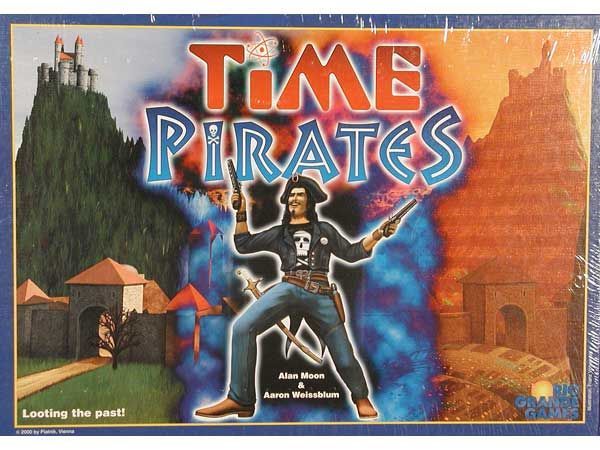Time Pirates (2000) Board Game
Time Pirates is a board game designed by Franz Vohwinkel and released in in 2000. The game is set in a time-traveling world where players take on the role of pirates trying to collect treasures from different time periods.
Game Components of Time Pirates
How To Setup Time Pirates
To set up the game, players first lay out the time period tiles, creating a timeline with limited pathways. Each player chooses a token and places it at the starting point. The artifact tiles are shuffled and placed face down on their respective time period tiles. The Time Police tokens are also placed according to the rules. The objective is to navigate through time, collecting artifacts while avoiding the Time Police.
Gameplay Mechanics and Game Objective
– Players can refill tiles, collect tiles, or move on to the next time period.
– Avoid the Time Police, who can steal the largest collection of artifacts.
– The game consists of three rounds of collection, with the player having the best collection winning.
Player Experience
Playing Time Pirates is an exciting adventure through time, where strategy and luck intertwine. Players must balance the risk of collecting valuable artifacts with the danger of being caught by the Time Police. The game’s simple mechanics make it accessible to younger players, while the strategic depth keeps it engaging for adults.
Pros
Cons
Personal Thoughts on Time Pirates
Time Pirates is ideal for families and casual gamers looking for a fun, light-hearted game with a bit of strategy. The theme of time travel and artifact collection is engaging, and the short playing time makes it a great addition to any game night. However, experienced gamers might find the game mechanics a bit too simplistic and the luck factor too high. Overall, it’s a great introduction to board games for younger players and a pleasant diversion for more seasoned gamers.
We are supported by our audience. When you purchase through links on our site, we may earn an affiliate commission, at no extra cost for you. Learn more.

